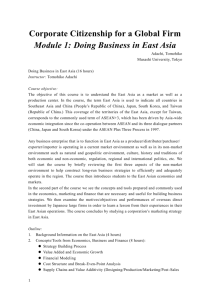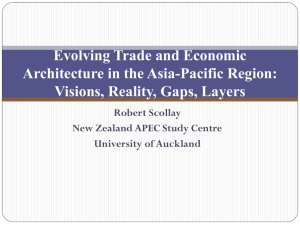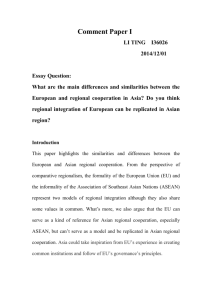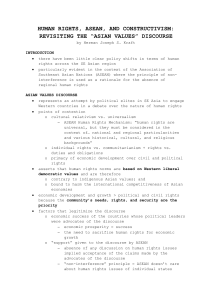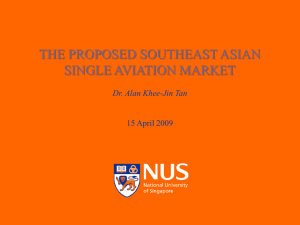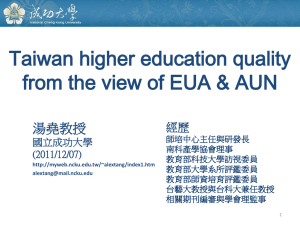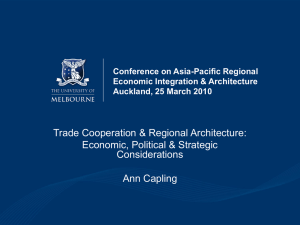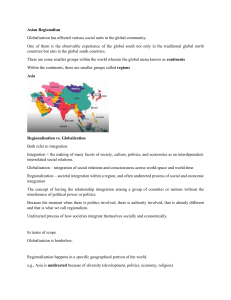Document
advertisement
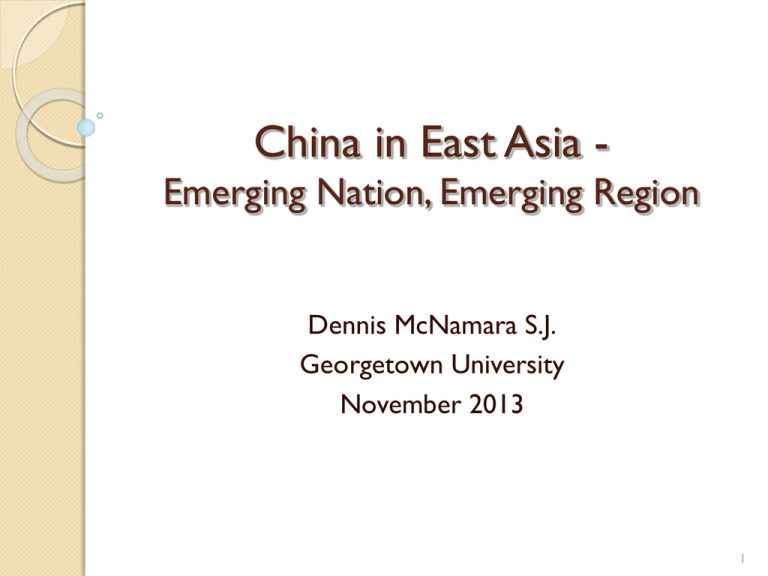
China in East Asia Emerging Nation, Emerging Region Dennis McNamara S.J. Georgetown University November 2013 1 2 A Region in Formation Examine China’s Role in the East Asian Community – precedent and prospect Focus on APT, and the Network of East Asian Think Tanks (NEAT) Central Party School of the Chinese Communist Party 中央党校 3 Inter-Regional (APEC) APEC Asia Pacific Econ. Cooperation (1989); 21 states (C.Taipei) 41% pop, 44% trade. China Host 2014 Trade Pacts: ◦ TPP Trans-Pacific Partnership U.S., Japan, + 10; high quality, set standards ◦ FTAAP Free Trade Area of the Asia-Pacific (APEC FTA) 4 Organizations (North) Trilateral Cooperation (CJK): Summits from 2008; Secretariat 2011 (TCS & Iwatani); Investment Treaty May 2010 Shanghai Cooperation Organization 上海 合作组织; China, Russia, and 4 “stans.” SCO charter from 2002 5 Organizations (South) ASEAN 10 from 1967:Three Pillars; ASEAN Economic Com. (AEC) 2015 ASEAN Plus Three (APT)1997;Vision Group, 2002; E. Asian Com. (EAC) ASEAN + 6 (2006); then East Asian Summit (ASEAN + 8) from 2011 6 ASEAN Plus Three (APT) East Asian Vision Group from 1997 East Asian Study Group 2002 defines role and structure ASEAN Secretariat (Jakarta) - 3 major forums, working groups & Summit 7 EAVG & Think Tanks East Asian Vision Group Proposal Network of E. Asian Think Tanks (NEAT) Function: bridge academics & decisionmakers. Advise on governance & political/econ, trends 8 Dialogue at NEAT Track II Dialogue for APT process Problem: government officials versus academics; China/Japan competition Tension: functional or strategic dialogue on Asian integration 9 NEAT Working Groups 2011 Cultural Exchange (Korea) Regional Cooperation on Disaster Management (Japan) Disaster Management; Trade & Investment Facilitation (China) 10 NEAT Leaders Japan -- Council on the East Asian Community (Ito Kenichi) China – China Foreign Affairs University (Qin Yaqing and Wei Ling) Philippines Development Institute www.neat.org.ph 11 China’s Prospects in EAC Leverage: domestic market, funding for infrastructure abroad, & Soft Power Initiatives (e.g., Confucian Institutes) Clarity of Strategies & Priorities in bilateral relations (e.g., Cambodia) Difficulty of territorial disputes, and rising powers (e.g., India) 12 Introduction to CCPS 党校 Party School of the Central Committee of the Chinese Communist Party Roles: ganbu,干部 training & evaluation; policies for leadership. Georgetown University – academic exchange, study tours w CCPS faculty 13
